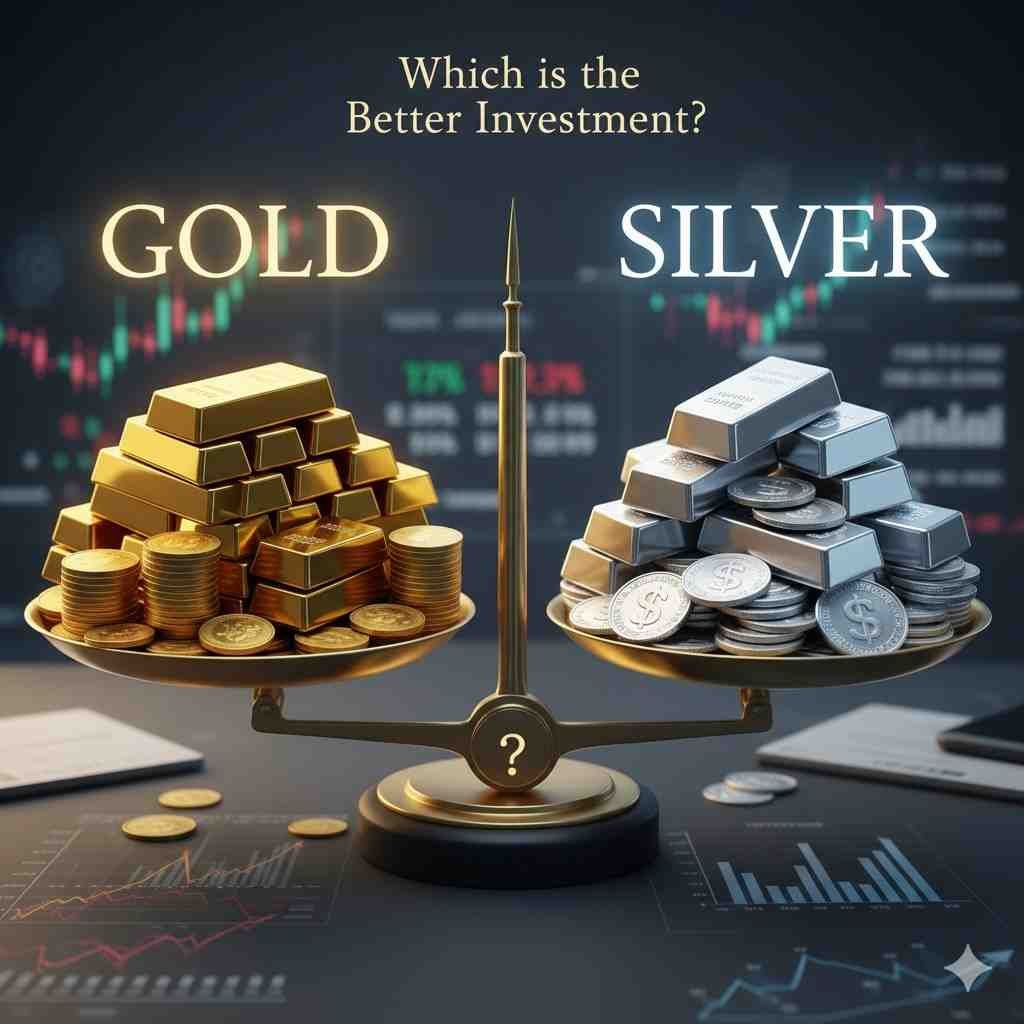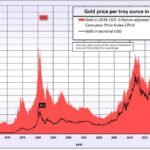
Gold vs. Silver: Which is the Better Investment?
For centuries, investors have turned to precious metals like gold and silver to diversify their portfolios and hedge against economic uncertainty. Both are tangible assets that hold intrinsic value, but they behave very differently in the market. Deciding between gold and silver isn’t a simple choice; it depends on your financial goals, risk tolerance, and investment strategy.
This guide provides a comprehensive comparison of gold and silver, analyzing their key differences to help you determine which precious metal is the right investment for you.
Gold vs. Silver: A Side-by-Side Comparison
| Feature | Gold | Silver |
|---|---|---|
| Primary Use | Store of value, wealth preservation, jewelry | Industrial applications, store of value, jewelry |
| Market Size | Large, highly liquid | Smaller, less liquid than gold |
| Price Volatility | Generally lower | Generally higher |
| Industrial Demand | Low (~10%) | High (~50%) |
| Storage | Less space required for a given value | More space required for the same value |
| Price per Ounce | High | Low |
1. Market Demand and Supply
The fundamental driver of any asset’s price is demand and supply. For gold and silver, these forces come from different places.
- Gold: The demand for gold is primarily driven by investment and wealth preservation. Central banks and governments hold vast gold reserves to stabilize their currencies, and individual investors buy gold as a “safe haven” during times of economic turmoil. A smaller portion of gold demand comes from jewelry and a minimal amount from industrial uses, like specialized electronics.
- Silver: Silver has a dual identity. Like gold, it’s considered a store of value and is used in jewelry and silverware. However, over 50% of silver’s demand comes from industrial applications. It is a critical component in solar panels, electric vehicles, electronics, and medical equipment. This industrial reliance means silver’s price is tied not only to investment sentiment but also to the health of the global economy and technological trends.
Key Takeaway: Gold’s value is more closely tied to financial markets and investor fear, making it a pure safe-haven asset. Silver’s value is influenced by both investment demand and industrial output, making it more sensitive to economic cycles.
2. Price and Volatility
One of the most significant differences between gold and silver is their price and resulting volatility.
- Price: Gold is significantly more expensive than silver. The gold-to-silver ratio (how many ounces of silver it takes to buy one ounce of gold) historically averages around 50-60 but often fluctuates. As of late 2023, this ratio has been hovering around 80:1, meaning gold is 80 times more expensive per ounce. This lower entry price makes silver more accessible for small-scale investors.
- Volatility: Because the silver market is much smaller than the gold market, it is more volatile. A smaller market means that large buy or sell orders can have a more significant impact on the price. This volatility is a double-edged sword: it offers the potential for higher percentage returns but also comes with greater risk. Gold, with its large and liquid market, tends to have smoother, more stable price movements.
Key Takeaway: Silver is the more speculative play. If you have a higher risk tolerance and are seeking greater potential gains, silver’s volatility might be attractive. If you prioritize stability and wealth preservation, gold is the more conservative choice.
3. Historical Returns and Growth
Both gold and silver have delivered strong returns over the long term, but their paths have differed.
- Gold: Often shines during periods of high inflation, geopolitical instability, or stock market declines. It acts as a reliable store of value when confidence in fiat currencies wanes. Its growth is typically steady and less dramatic than silver’s.
- Silver: Because of its volatility, silver can outperform gold during bull markets for precious metals. When investor sentiment turns positive towards metals, silver’s lower price attracts a flood of speculative capital, often leading to explosive price gains. For example, in the bull market of 2010-2011, silver’s price increase significantly outpaced gold’s. However, it also tends to fall harder and faster during downturns.
Key Takeaway: Gold offers more consistent, defensive growth. Silver provides the potential for more aggressive, cyclical growth but with higher risk.
4. Other Considerations
- Storage: Because silver is much less dense in value, storing it requires significantly more physical space than an equivalent dollar amount of gold. For a $50,000 investment, you could hold your gold in one hand, while the same value in silver would weigh over 100 pounds and fill a large box. This makes storage and transportation more costly and cumbersome for silver investors.
- Market Predictions: Predicting the future price of any asset is difficult.
- Gold Predictions: Analysts often tie gold’s future to central bank policies (like interest rate cuts), inflation rates, and geopolitical tensions. A weakening US dollar is also typically bullish for gold.
- Silver Predictions: Silver’s future is linked to the “green transition.” The growing demand for solar panels, 5G technology, and electric vehicles is a powerful long-term catalyst for industrial silver demand. If the global economy grows, so will the need for silver.
Conclusion: Which Should You Choose?
The “better” investment depends entirely on your goals as an investor.
You should consider investing in Gold if:
- Your primary goal is wealth preservation and protecting against inflation.
- You are a conservative investor with a low risk tolerance.
- You want a highly liquid asset that acts as a safe haven during economic crises.
- You have a significant amount to invest and storage efficiency is a concern.
You should consider investing in Silver if:
- You are seeking higher potential returns and have a higher risk tolerance.
- You want to capitalize on the growth of green technologies and industrial innovation.
- You are a smaller investor looking for a more accessible entry point into precious metals.
- You understand and are comfortable with market volatility.
Many experienced investors choose to hold both gold and silver in their portfolios. This strategy allows them to benefit from gold’s stability while also capturing some of silver’s speculative upside, creating a balanced and diversified precious metals holding. Before making any investment, consider your own financial situation and consult with a financial advisor to determine the right approach for you.
For more articles read here
- How to Download Your Telangana Family Member Certificate Soft Copy (FMC)
- Top 5 Indian Cities to Buy Property in 2025: Investment & Growth Guide
- 100+ Unique Anniversary Wishes for Everyone You Know
- Top 15 Best Indian Social Media & AI Apps (2025): Revolutionizing Bharat’s Digital Future
- 1000+ Happy Birthday Wishes for Everyone in Your Life









